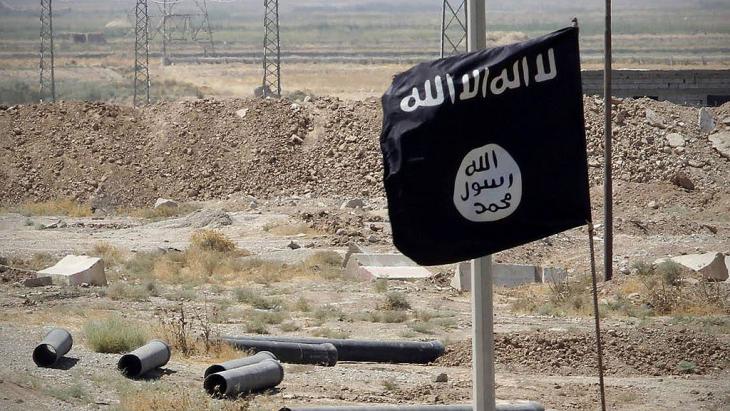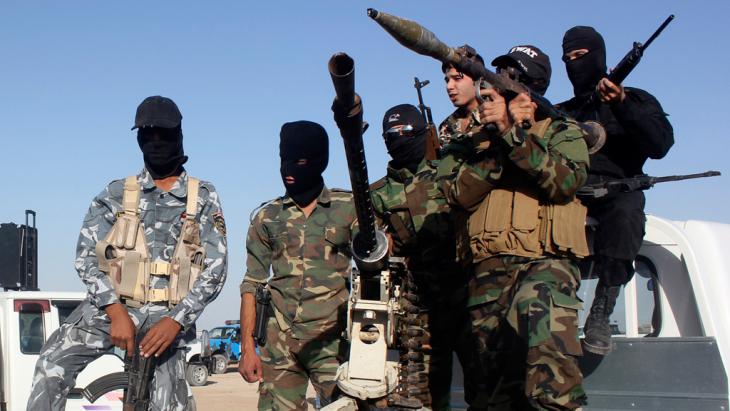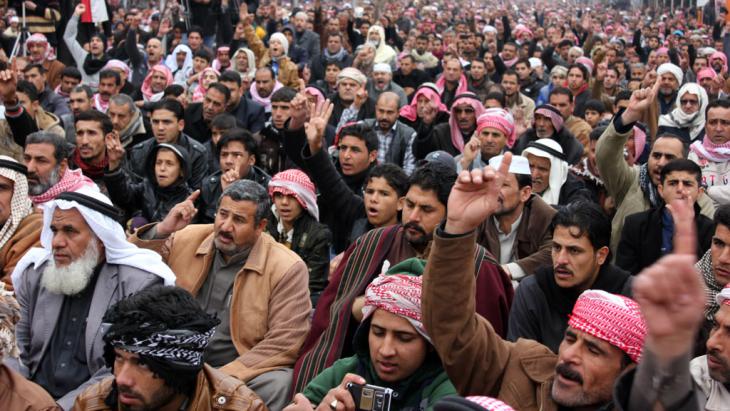The enemy of my enemy

Middle East experts and scholars of Islamism are busy trying to work out the difference between Islamic State and "al-Qaida". They explain why the new threat is even bigger than the old one. They say it's because IS has a "territory", while Bin Laden had none (which is not quite true for the period until the end of 2001), and because the new terrorists have in all openness proclaimed a "caliphate", while the old ones operated underground, etc.
Before the ink has dried on all the studies about the "return of the caliphate", it will most likely no longer exist. It is already shrinking. The arc of suspense called forth by Islamic State will likely prove shorter than we might be led to expect by the amount of attention the group is currently receiving. But nor will IS completely disappear anytime soon. It will continue to exist underground as an extremist Sunni splinter group and will undoubtedly continue to wreak havoc.
Panic at the prospect of possible attacks in Bremen and Brunswick are side effects of this excessive focus. The main effect, however, is to cause us to see what is happening in the Fertile Crescent as if through the eyes of an "American sniper". Just like in the new action film by Clint Eastwood, the enemy consists of "wild Muslims" who hate the West. And like the Hollywood director, we sometimes seem to forget that the narrative of "extremist Islam against the West" in Iraq only came about as a result of the US-led invasion in 2003.

Obscure line of conflict
Ever since then, this narrative has, however, been very real indeed. But it obscures another line of conflict that has run through the Near and Middle East for decades. If we look at this line of conflict, the drama surrounding IS seems like an episode in the prolonged inner-Islamic religious war between Shias and Sunnis. The episodic nature of Islamic State becomes apparent when it is seen as part of this sweeping religious struggle, which was triggered 36 years ago by the rivalry between the revolutionary Islamic Republic of Iran and the Kingdom of Saudi Arabia.
The young scholar Christoph Gunther suggests with his theory of the "second state in Mesopotamia" that a hidden counter-project to the new Shia-dominated regime in Iraq, whose elites take their cue from their huge neighbour, Iran, took shape in the summer of 2003. Its potential for violence erupted for the first time on 29 August 2003 in a devastating bomb attack in Najaf, which took the life of Shia cleric Muhammad Baqir al-Hakim along with more than 100 other victims.
Various groups closed ranks under the imaginary banner of the anti-Shia alternative state: former officials of Saddam's wiped-out regime and radical Islamists were among them. What united them was the fact that they were all Sunnis. And it was out of this Sunni opposition that "Islamic State" was eventually born.
Inner-Islamic religious war: the example of Syria
While the sectarian nature of the conflict in post-Saddam Iraq was clear from the start, the uprising in Syria initially looked like a civic revolt against an outdated authoritarian regime. Soon, however, demonstrators in Homs and Hama could be heard calling for "a coffin" for the (Shia) Alawites and "exile to Beirut" for Christians. Starting in the summer of 2012, the events in Syria, where armed Sunni insurgents now wanted to topple the Assad regime using violence, could no longer be distinguished from what was going on in Iraq, where Sunnis – especially in the provinces of Anbar and Mosul – called for a "revolution" against the government of then Prime Minister Nouri al-Maliki.

The rest is history, so to speak. And it's not over yet. On the contrary, it is instead building to a new climax in Tikrit and Mosul. Fighters of the Sunni "Islamic State" have made Saddam Hussein's birthplace their outpost on the Tigris River. And on the other side, Shia militiamen, led by a general of the Iranian revolutionary guards, are out to conquer the city.
The battles are accompanied by "sectarian" cleansing. During their advance along the Tigris last year, IS fighters massacred Shias, both soldiers and civilians. Now there are increasing reports of Sunnis being massacred by advancing Shia militiamen. To escape this fate, thousands residents of Tikrit have fled deeper into the territory controlled by IS.
The IS as a counterpart to the Shia militias
Anyone who believes that the Sunnis in Tikrit and Mosul will welcome the opponents of "Islamic State" with open arms as liberators is mistaken. They fear the Shia militias even more than they do IS. This shows just how much the inner-Islamic religious war has polarised society. Although many Sunnis reject IS excesses – executions, destruction of art treasures, radical dress codes – and even call IS fighters "terrorists", they still claim that IS is the inevitable counterpart to the Shia militias.
The Arab Sunni population will only change its tolerant attitude towards IS when it sees the "IS caliphate" collapsing under the cumulative pressure of Shia militias (including what's left of the Syrian army), the US-led attacks by air and special forces, and the Kurdish Peshmerga and PKK fighters.
The "caliphate" is also weakening itself with its excessive internecine violence. A gang of murderers cannot uphold a "state" for long. If the Sunnis in the Fertile Crescent start to fear that the weakness of IS will encourage the rise of the Shias, they themselves will shake off the yoke of this radical group. This will be the moment when the episode of the "caliphate" comes to an end.

Sunni alliance against Tehran
But this turnaround will not bring reconciliation and inner-Islamic peace. Even after IS disappears as a power factor with its own territory, the religious war in the Fertile Crescent will continue to rage. Saudi Arabia and the other Gulf dynasties will help to build up a different counterforce to the governments supported by Iran in Baghdad and Damascus.
Against this backdrop, even the conflicts the West is waging with various players in the Near and Middle East appear in a different light. One factor in the Sunni-Shia rivalry is namely the question of which side can effectively challenge the West (and Israel).
This logic was already apparent during the US occupation of Iraq. At that time, the precursors of the "Islamic State" vied with radical Shias to see who could kill more American soldiers. Today, IS is trying the same thing with beheadings of Western hostages, attacks and the razing of archaeological sites.
Iran for its part is attempting to provoke the West with its nuclear programme, violence against Israel and aggressive regional power politics symbolised of late by a general of the revolutionary guards at a command post in Tikrit. Peace will only come when neither side is able to "score" any longer with such provocations.
Stefan Buchen
© Qantara.de 2015
Translated from the German by Jennifer Taylor